알루미늄은 가벼운 특성, 비부식성, 경도로 인해 현대 산업에서 가장 많이 사용되는 금속 중 하나입니다. 그럼에도 불구하고 제조, 건설 또는 디자인 프로젝트에서 최고의 결과를 얻으려면 표면 처리가 매우 중요합니다. 샌드블라스팅은 알루미늄 표면을 준비하는 기술 중 가장 효율적인 솔루션으로 여겨져 왔는데, 샌드블라스팅 공정은 바람직하지 않은 재료를 모두 제거하고 모든 윤곽을 매끄럽게 하며 코팅과 페인트의 접착력을 향상시키기 때문입니다. 이 포괄적인 강의에서는 알루미늄 샌드블라스팅에 대해 알아야 할 모든 것, 공정 자체, 장점, 용도, 도전 과제 및 위험에 대해 살펴볼 것입니다.
이 기사가 끝나면 사람들이 점차 알루미늄 합금 (샌드 블라스트)을 업계에서 선호하는 이유와 노력을 극대화하기 위해 알루미늄을 효과적으로 샌드 블라스트하는 방법에 대한 지식을 완전히 갖추게 될 것입니다.
알루미늄 샌드블라스팅이란?
일반적으로 샌드블라스팅이라고 불리는 연마 블라스팅은 일반적으로 모래 또는 다른 연마재와 같은 미세 입자를 고속으로 가속하여 세척, 거칠기 또는 광택을 낼 재료에 분사하는 표면 처리 공정입니다. 여러 가지 장점이 있는 것으로 입증된 이 공정을 알루미늄에 사용하면 성능과 소재의 외관을 개선하는 데 도움이 되는 여러 가지 이점을 얻을 수 있습니다.
샌드블라스팅은 기존의 세척 방법과 달리 알루미늄 표면 깊숙한 곳까지 작업하여 녹, 페인트, 산화, 그리스 등 제거하기 어려운 오염 물질을 제거한다는 점에서 차별화됩니다. 따라서 표면이 더 매끄럽고 깨끗해지며 코팅이나 페인트 또는 용접의 접착력 측면에서 더 나은 결과를 얻을 수 있습니다. 알루미늄 습식 샌드블라스팅. 항공우주, 자동차, 해양, 건설 등의 산업에서 샌드블라스팅을 통해 제품의 품질과 수명을 개선하고 있습니다.
이 과정의 결과로 강도와 아름다움, 기능성을 모두 갖춘 샌드블라스트 알루미늄이라는 유명한 마감재가 탄생했습니다.
알루미늄 샌드 블라스팅 공정
언제 알루미늄 샌드 블라스팅, 처리 과정에서 금속 표면을 손상시키지 않으려면 정확하고 섬세한 방법이 중요합니다. 다음은 절차에 대한 단계별 아이디어입니다:
1. 표면 준비
샌드블라스팅 전에 알루미늄 표면을 청소하여 먼지나 기름 또는 기타 잔여물을 제거합니다. 사전 세척은 연마재의 적절한 성능을 충족하고 오염을 방지합니다.
2. 연마 미디어 선택
필요한 마감에 따라 다양한 종류의 연마재를 사용합니다. 알루미늄의 경우 유리구슬, 호두껍질 또는 산화알루미늄과 같이 표면을 원하는 만큼 침식하지 않는 부드러운 연마재를 선택할 수 있습니다.
3. 압력 조절하기
알루미늄은 강철보다 덜 단단하기 때문에 더 낮은 압력으로 분사하는 것이 좋습니다. 높은 압력에서는 뒤틀림이나 손상이 발생할 수 있지만, 조절된 압력은 균일하고 매끄러운 결과를 보장합니다.
4. 블라스팅 프로세스
준비가 되면 작업자가 블라스팅 노즐을 알루미늄 표면으로 안내합니다. 그릿 입자가 표면에 부딪혀 산화물, 코팅 또는 결함을 효과적으로 제거합니다. 이렇게 하면 깨끗하고 질감이 오래 지속되는 샌드블라스트 알루미늄이 만들어집니다.
5. 블라스팅 후 처리
블라스팅된 알루미늄 표면은 공정 후 연마제의 흔적이 남지 않도록 한 번 더 세척 과정을 거칩니다. 그런 다음 용도에 따라 산화를 방지하기 위해 보호 코팅 또는 페인트를 즉시 도포합니다.
정밀하게 수행하면 전체 공정이 완벽하게 마무리되며, 프로젝트 전반에 걸쳐 알루미늄을 일관되게 샌드블라스팅하는 것이 매우 편리합니다.
알루미늄용 블라스트 미디어 선택 시 고려해야 할 요소
샌드블라스트 또는 알루미늄 표면에 샌드블라스트 시뮬레이션을 한 표면의 원하는 품질과 수명을 얻기 위해서는 블라스트 미디어의 선택도 중요합니다. 알루미늄은 일반 금속보다 부드럽고 반응성이 높기 때문에 많은 주의를 기울여야 하며, 고려해야 할 요소가 많습니다:
1. 알루미늄 표면 경도
알루미늄은 강철보다 훨씬 부드럽기 때문에 스틸 그릿과 같이 너무 강한 연마제를 사용하면 휘어지거나 깊은 스크래치가 생길 수 있습니다. 선택한 미디어는 청소하기에 충분히 뻣뻣해야 하며 표면에 손상을 줄 정도로 연마성이 강하지 않아야 합니다. 이것은 시험과 연습을 통해 이루어집니다.
2. 의도된 표면 마감
유리 구슬이나 플라스틱 연마재와 같은 부드러운 매체가 매끄럽고 장식적인 마무리의 경우 가장 효과적입니다. 알루미늄 산화물 또는 가넷 경질 연마재는 페인트 또는 접착제 상관관계를 향상시키는 프로파일 유형을 남기므로 코팅 준비의 경우 더 적합합니다.
3. 알루미늄 부품 두께
얇은 알루미늄은 왜곡될 수 있으므로 조심스럽게 블라스팅해야 합니다. 이러한 경우 소다나 호두 껍질과 같은 부드러운 연마재를 사용해야 합니다. 알루미늄이 무거울수록 더 강한 마모를 견딜 수 있습니다.
4. 오염 물질 유형
소다 블라스팅은 기름, 먼지, 산화를 청소하는 데 효과적입니다. 알루미늄 산화물 또는 가넷 블라스팅은 오래된 페인트나 부식과 같이 오염이 심한 부분을 제거하는 데 사용할 수 있습니다.
5. 비용 및 재활용성
유리구슬, 가닛 및 기타 재활용 가능한 연마재는 여러 가지 재활용 기회가 있으므로 비용 효율적입니다. 비용과 지속 가능성을 중시한다면 재활용 가능한 미디어를 선택하는 것이 좋습니다.
6. 환경 및 안전 문제
과거에 흔히 사용되던 규사는 규폐증과 같은 건강상의 위험 때문에 지금은 사용하지 않습니다. 가닛, 유리구슬, 플라스틱 연마재와 같은 안전한 종류의 모래를 사용하여 작업자의 생명을 보호하고 환경을 보호해야 합니다.
7. 블라스팅 후 요구 사항
알루미늄 표면에 긴급한 도장이나 코팅이 필요한 경우 연마제는 접착이 효과적으로 이루어질 수 있도록 적절한 프로파일을 제공해야 하므로 산화알루미늄이 사용됩니다. 부품이 장식용이고 추가 가공이 필요하지 않은 경우 유리 구슬 또는 소다 블라스팅이 더 적합합니다.
알루미늄 샌드 블라스팅 안전 수칙
그러나 알루미늄 샌드블라스팅의 결과는 매우 뛰어나며, 가공 과정에서도 고압 기계를 사용하여 미립자와 먼지가 발생합니다. 적절한 예방 조치를 취하지 않으면 건강에 영향을 미치거나 장비를 손상시키거나 마감 처리가 불량해질 수 있습니다. 샌드블라스트 알루미늄 작업 시 준수해야 할 몇 가지 중요한 안전 절차는 다음과 같습니다.
1. 올바른 개인 보호 장비(PPE) 사용
운영자가 항상 착용해야 하는 몇 가지 품목은 다음과 같습니다:
- 제공된 비행사 폭발 헬멧
- 호흡기나 방진 마스크는 미세 입자 흡입에 노출되지 않도록 사용하는 것이 좋습니다.
- 고강도 장갑과 방폭복을 사용한 피부 보호
- 페이스 쉴드 아이쉴드
- 컴프레서 소음에 대한 소음 방지 헤드셋
개인 보호 장비는 다치거나 유해한 알루미늄 먼지와 접촉할 가능성을 최소화합니다.
2. 적절한 환기 공간 확보
작업 공간에서 알루미늄 샌드블라스팅 작업을 직접 할 때는 작업장에 환기 장치 또는 먼지 배출 장치를 설치해야 합니다. 이렇게 하면 먼지가 쌓이는 것을 방지하고 가시성을 높여 작업자가 흡입 관련 문제를 겪지 않도록 보호할 수 있습니다.
3. 발파 압력 제어
알루미늄은 강철에 비해 부드러우므로 매우 높은 압력으로 블라스팅하면 표면이 뒤틀리거나 손상될 수 있습니다. 항상 컴프레서에 적당한 압력(40~60 PSI)을 사용하고 연마재의 두께와 종류에 따라 압력을 줄이거나 높이세요.
4. 적절한 연마 미디어 선택
지나치게 강한 연마제를 사용하면 알루미늄에 심각한 스크래치가 생길 수 있습니다. 유리구슬, 산화알루미늄, 소다 등 프로젝트의 요건에 따라 세탁에 사용할 수 있는 적합한 연마제를 선택하세요. 이렇게 하면 재료뿐만 아니라 작업자의 안전도 보장할 수 있습니다.
5. 정전기 제거
샌드블라스팅 장비에서는 정전기가 발생할 수 있습니다. 특히 인화성 물질이 있는 곳에서는 충격이나 스파크를 방지하기 위해 먼저 접지하지 않고 장비를 작동하지 마세요.
6. 장비 자주 점검하기
노즐, 호스, 블라스트 포트의 효율적인 사용 여부를 점검하여 누출이나 갑작스러운 고장을 방지해야 합니다. 오작동하는 장치는 발파 작업의 효율성을 떨어뜨릴 뿐만 아니라 사고 발생률도 높입니다.
7. 연마 미디어로 작업하기
연마재는 뭉치지 않도록 건조한 상태로 유지해야 합니다. 젖은 상태에서는 불균일한 분사, 막힘 및 급격한 압력 변화가 발생할 수 있습니다.
8. 장시간 노출 방지
연마 블라스팅 장비를 사용할 때는 작업자가 휴식을 취하고 노출 시간을 제한하는 것이 좋습니다. 지속적인 발파 작업으로 인해 피로가 누적되어 사고가 발생할 수 있습니다.
9. 적절한 폐기물 처리
연마재와 알루미나 분진은 환경 요건의 일부로 반드시 폐기해야 합니다. 소다 및 호두 껍질과 같은 연마재는 환경 친화적이지만 일부는 특별히 처리할 수 있습니다.
10. 교육 및 감독
숙련된 작업자 외에는 누구도 알루미늄을 샌드블라스팅해서는 안 됩니다. 감독자는 작업자가 안전 조치를 준수하고 있는지, 구급상자 및 소화기 등 사고 발생 시 필요한 장비가 비치되어 있는지 확인해야 합니다.
샌드 블라스팅 알루미늄 장비
샌드블라스트 알루미늄을 고품질로 마감하기 위해서는 연마재 외에 최고의 장비를 사용하는 것이 중요합니다. 금속인 알루미늄은 부드럽기 때문에 손상을 방지하는 동시에 효율성을 높이기 위해 특별한 설정과 제어 시스템이 필요합니다. 다음은 사용되는 주요 장비입니다:
1. 공기 압축기
블라스팅 공정에서는 공기 압축기를 사용하여 공기를 가압하여 연마재에 압력을 가합니다. 알루미늄의 경우 일반적으로 뒤틀림이나 과도한 에칭을 방지하기 위해 낮은 압력(40-60 PSI)이 바람직하므로 컴프레서의 압력을 조절할 수 있어야 합니다.
2. 폭발 캐비닛
알루미늄 부품이 작은 경우에는 일반적으로 블라스트 캐비닛이 적용됩니다. 이 밀폐형 시스템의 장점은 연마재를 재활용하여 정밀한 블라스팅이 가능하다는 점입니다. 또한 먼지와 이물질을 깔끔하게 제거하여 안전과 청결한 작업 환경을 보장합니다.
3. 압력 블래스터(블래스트 포트)
표면이 넓은 경우에는 블라스트 포트가 필요합니다. 연마재는 이 가압 용기를 통해 연마재 흐름에 고정되어 공급됩니다. 제어 가능한 옵션을 통해 작업자는 유량을 조절하여 "샌드블라스트 알루미늄" 마감을 재현할 수 있습니다.
4. 노즐
블라스팅 패턴, 속도 및 범위는 노즐에 따라 달라집니다. 알루미늄 텅스텐 카바이드 또는 붕소 카바이드의 경우 연마 마모에 강한 노즐을 사용하는 것이 좋습니다. 최적의 노즐 크기는 블라스팅은 좋지만 제한적입니다.
5. 연마 미디어 전달 시스템
블라스팅 노즐을 향한 미디어 흐름은 이 시스템에 의해 제어됩니다. 알루미늄의 경우 표면의 큰 침식을 방지하기 위해 낮은 압력에서 균일한 전달을 보장해야 합니다.
6. 집진 시스템
샌드블라스팅은 건강과 안전에 위험을 초래할 수 있는 미세먼지를 발생시키는 것으로 알려져 있습니다. 집진 시스템은 깨끗한 작업 환경을 제공하고, 시야에 미치는 영향을 최소화하며, 작업자를 유해한 영향으로부터 보호합니다.
7. 개인 보호 장비(PPE)
작업자의 안전이 중요합니다. 필수 보호 장비에는 호흡기, 방폭복, 공기 공급 헬멧, 장갑, 청각 장비가 포함됩니다. 개인 보호 장비는 날아다니는 연마재와 알루미늄 먼지로 인한 상처를 방지합니다.
8. 공기 건조기 및 수분 분리기
압축 공기에는 습기가 있어 연마재가 뭉치고 블라스팅 효율이 떨어질 수 있습니다. 분리기와 건조기는 시스템을 깨끗하게 유지하여 분류기 및 샌드블라스트 알루미늄의 품질을 균일하게 유지합니다.
알루미늄 샌드 블라스팅의 장점
1. 표면 밀착력 향상
외관을 제거하여 지형과 질감이 있는 표면을 만드는 것은 표면이 페인트, 코팅 또는 접착제에 접착될 수 있기 때문에 알루미늄 샌드블라스팅의 주요 장점 중 하나입니다. 커밋 샌드위치. 70%의 결합 강도. 처리되지 않은 금속에 비해 샌드블라스트 처리된 알루미늄 표면으로 제작되었습니다.
2. 오염 물질 제거
오래된 페인트, 산화층, 부식은 시간이 지남에 따라 알루미늄의 강도를 심각하게 떨어뜨릴 수 있습니다. 샌드블라스팅은 이러한 오염 물질을 제거하고 금속의 무결성을 회복하여 추가 절차를 준비하는 과정입니다.
3. 향상된 미학
이 공정의 또 다른 장점은 깨끗하고 균일하며 무광택 마감 처리가 가능하다는 것입니다. 건축 작업과 소비재 모두에서 샌드블라스팅 알루미늄은 현재 디자인 가이드라인에 부합하는 미적 감각을 갖춘 매력적인 마감재를 제공합니다.
4. 내구성 향상
샌드블라스팅은 불순물을 제거하고 표면을 평평하게 만들기 때문에 알루미늄 부품의 수명과 내구성을 높이는 데 도움이 됩니다. 이는 특히 해양 또는 산업용 애플리케이션과 같은 혹독한 환경에서 유용합니다.
5. 비용 효율성
샌드블라스팅은 다른 치료법에 비해 매우 비용 효율적입니다. 알루미늄을 대량으로 빠르게 샌드블라스팅할 수 있는 대량 적용 능력과 속도 덕분에 제품 수요가 많은 산업에서 실용적입니다.
샌드블라스팅 알루미늄의 용도
1. 항공우주 산업
항공기의 부품은 정확하고 단단해야 합니다. 도장, 코팅 또는 용접할 부품의 준비는 일반적으로 샌드블라스트 알루미늄을 사용하며 열악한 환경에서도 오랜 성능을 제공합니다.
2. 자동차 제조
샌드블라스팅은 오래된 페인트를 청소하거나 산화 후 다시 칠해야 하는 차체, 바퀴, 엔진 부품을 준비할 때 자주 사용됩니다. 이 절차는 장식적인 마감 처리를 할 때도 유용합니다.
3. 해양 산업
선박, 보트, 해양 플랫폼이 바닷물에 지속적으로 노출되면 부식이 증가합니다. 알루미늄 구조물도 샌드블라스팅을 통해 수리하고 보존하면 더 오래 사용할 수 있습니다.
4. 건축 및 디자인
외부 표면이든 내부 마감재든 샌드블라스트 알루미늄은 모던한 무광택 마감으로 매력적인 외관을 제공합니다. 커튼월, 패널 및 장식 아이템에 광범위하게 사용됩니다.
5. 도구 및 장비 생산
알루미늄 부품은 산업 기계의 마모를 견디는 데 필요한 경우가 대부분입니다. 샌드블라스팅은 이러한 부품을 매끄럽게 처리하여 수명을 두 배로 늘려주는 보호 코팅을 제공합니다.
샌드블라스팅과 다른 표면 처리의 비교
샌딩
- 샌드 블라스팅은 기존의 샌딩보다 시간과 노동력이 덜 듭니다. 샌딩은 알루미늄을 매끄럽게 만들 수 있지만 산 세척만큼 매끄럽고 깨끗하게 만들지는 못합니다.
- 산화는 화학적 수단으로 제거할 수 있는데, 이는 효과적이지만 환경 및 안전 위험을 초래할 수 있습니다. 반대로 샌드블라스팅은 재활용 가능한 연마제를 사용하여 환경에 더 친화적입니다.
레이저 청소
- 레이저 청소는 매우 정확하지만 비용이 많이 들고 고도로 전문화된 장비를 사용해야 합니다. 샌드블라스팅은 여전히 대규모에서 더 경제적이고 실현 가능합니다.
- 알루미늄 샌드 블라스팅에 효과적이기 때문에 대부분의 다른 옵션에 비해 좋은 옵션입니다.
알루미늄 샌드 블라스팅 유형
프로젝트에 필요한 마감 유형과 목적에 따라 다양한 공정과 연마재를 사용하여 알루미늄을 샌드블라스팅할 수 있습니다. 샌드블라스트 알루미늄의 경우 사용할 표면이 매끄럽고 튼튼한지 확인하기 위해 유형이 중요합니다. 주요 유형은 다음과 같습니다:
1. 유리 비드 블라스팅
거의 매끄러운 새틴 마감을 원할 경우, 알루미늄에 모래를 사용하는 대신 샌드블라스팅을 통해 원하는 효과를 내기 위해 흰색 뒷면 유리 비드를 사용하기도 합니다. 일반적으로 이 기법은 부드럽고 비파괴적인 기법으로, 아래 금속에 일관된 무광택 마감을 만들어냅니다. 장식 및 건축용으로 많이 사용됩니다.
2. 알루미늄 산화물 블라스팅
이 유형의 각진 입자는 유리 구슬보다 단단하기 때문에 더 거친 세척 작업을 수행할 때 적합합니다. 산화알루미늄 블라스팅은 조금 더 거칠기 때문에 코팅이나 도장이 필요한 경우에 적합합니다. 샌드 블라스팅된 알루미늄의 표면은 저항력과 접착력이 뛰어납니다.
3. 소다 블라스팅
소다 블라스팅에 사용되는 소다에는 중탄산나트륨이 포함되어 있어 기존 블라스팅 재료에 비해 부드럽습니다. 알루미늄 층을 손상시키지 않고 그리스나 산화층을 벗겨내는 것과 같은 민감한 세척 공정에 광범위하게 적용할 수 있습니다.
4. 스틸 그릿 또는 샷 블라스팅
스틸 그릿 블라스트는 알루미늄은 부드럽기 때문에 고강도 작업에서는 사용할 수 없지만, 고강도 작업에서는 사용할 수 없습니다. 일반적으로 무거운 질감의 외관을 제공하지만 표면의 변형을 방지하기 위해 많은 주의를 기울여 다루어야 합니다.
5. 호두 껍질 발파
호두 껍질은 경량 청소에 사용되는 연마제를 친환경적으로 대체할 수 있습니다. 이 방법은 알루미늄 층의 프로파일을 변형시키지 않는 코팅 제거에 특히 적합합니다.
6. 전통적인 방법 실리카 샌드 블라스팅
지금은 건강상의 문제로 인해 규사의 사용이 예전만큼 널리 퍼지지는 않았지만, 과거에는 알루미늄 샌드블래스팅에 규사를 사용하기도 했습니다. 현대 산업에서는 동일한 효과를 내면서도 건강에 유해하지 않은 유리구슬이나 산화알루미늄과 같은 더 안전한 옵션을 사용하고 있습니다.
알루미늄 샌드 블라스팅의 기술적 안전 요소

샌드블라스팅이 제공하는 많은 이점만큼이나 안전 대책을 마련하는 것도 중요합니다:
- 안전 장비: 보호 장비를 사용하는 작업자는 마스크, 장갑, 고글을 사용하여 먼지와 연마제를 흡입하지 않도록 해야 합니다.
- 환기: 이는 공기 흐름이 좋지 않고 밀폐된 공간에 집진 시스템이 있는 경우에 필요합니다.
- 제어된 압력: 알루미늄이 블라스팅으로 인해 절단되지 않도록 주의해야 하므로, 블라스팅은 압력을 조절하고 올바른 매체를 사용하여 수행해야 합니다.
- 교육: 운영자는 장비를 안전하게 작동하고 작업할 수 있도록 교육을 받아야 하며, 가능한 위험을 식별하거나 파악할 수 있는 방법을 알고 있어야 합니다.
이러한 제안을 통해 업계에서는 샌드블라스트 알루미늄이라고 불리는 효과의 이점을 안전하게 얻을 수 있습니다.
알루미늄 샌드블라스팅 문제
- 표면에 의한 손상 위험: 알루미늄은 과도한 압력으로 인해 손상되거나 휘어질 수 있습니다.
- 산화: 알루미늄은 산화가 빠르므로 블라스팅 후 즉시 산화를 방지해야 합니다.
- 미디어 선택: 잘못된 용지를 선택하면 스크래치나 과도한 침식이 발생할 수 있습니다.
- 장비 비용: 장기적인 비용 효율성은 존재하지만, 블라스팅 장비를 설치하는 것은 비용이 많이 드는 모험일 수 있습니다.
그럼에도 불구하고 알루미늄의 재현 가능한원기술적으로 조용한 샌드 블라스팅을 수행하는 능력은 현대 산업에서 피할 수없는 방법으로 트릭을 제시합니다.
GC 정밀 금형을 선택해야 하는 이유
CG 정밀 금형에서는 알루미늄 금형 설계, 표면 처리 및 정밀 제조를 전문으로 하는 고품질 제조를 제공합니다. 알루미늄 샌드블라스팅, 금형 절단, 마감 및 맞춤형 부품 개발을 통해 다양한 산업 분야의 요구 사항을 처리합니다. 당사는 첨단 기술과 전문 기술을 사용하여 정확하고 오래 지속되며 생산성을 극대화합니다. 당사의 금형 및 알루미늄 서비스는 자동차, 항공우주, 산업 또는 소비재 등 모든 분야에서 내구성 있는 성능을 보장하는 브랜드입니다. 고객의 요구를 충족시키기 위해 CG 정밀 금형을 선택하면 혁신, 신뢰성 및 고객 만족을 믿는 팀과 협력하여 고객이 비용 효율적인 성능을 통해 품질 표준을 유지할 수 있다는 것을 확신 할 수 있습니다.
결론
알루미늄 샌드 블라스팅 은 다양한 산업 분야에서 표면을 준비하는 강력한 방법 중 하나로 인기를 얻고 있습니다. 항공우주 분야든 건축 분야든, 샌드블라스트 알루미늄 시장은 지속성, 외관 및 절차적 기능의 증가와 관련하여 지속적으로 증가하고 있습니다. 전문가들은 작업 방법과 고려해야 할 이점 및 안전 조치를 파악하여 이 다용도 방법을 최적화할 수 있습니다.
도장할 부품을 청소하거나 부식된 해양 시설을 수리하거나 현대적인 건축물의 특징적인 마감재를 만드는 경우, 일반적으로 알루미늄 샌드블라스팅이라고 하는 에뮬레이션 기술은 중요한 기술입니다. 이 기술을 잘 활용하면 내구성이 뛰어나고 경제적이며 눈에 띄는 결과물을 얻을 수 있습니다.
생산과 제품 디자인의 역동적인 영역에서 샌드블라스팅 알루미늄은 기능성과 미학을 결합하는 전설적인 공정입니다. 다음 멀티 알루미늄 프로젝트에서 작업할 때 샌드블라스팅 알루미늄의 완벽한 무결점 표면을 구현할 때 얻을 수 있는 많은 이점을 기억하세요.
자주 묻는 질문 FAQ
1. 알루미늄을 샌드 블라스팅하는 이유는 무엇인가요?
알루미늄 샌드블라스팅은 페인트, 녹 또는 산화와 같은 오염 물질을 제거하고 질감이 있는 표면을 남깁니다. 이렇게 하면 코팅의 접착력과 내구성이 향상되고 알루미늄을 깨끗하고 균일하게 마감할 수 있습니다.
2. 알루미늄 샌드블라스팅에 어떤 미디어를 사용해야 하나요?
유리 구슬은 장식용 마감재로 가장 적합합니다. 알루미늄 산화물 또는 가넷은 코팅을 준비하기 위해 접착력이 좋습니다. 플라스틱 매체와 소다는 비파괴적인 방식으로 표면을 세척하기 위해 사용됩니다.
3. 샌드 블라스팅은 모든 알루미늄에 적용되나요?
물론 블라스팅 압력과 미디어 유형을 적절히 선택해야 한다는 한계가 있습니다. 가장 얇거나 섬세한 부품은 유리 구슬이나 소다 영역과 같은 부드러운 연마재로 처리해야 하고, 거친 부분은 산화알루미늄을 사용해야 합니다.
4. 알루미늄과 관련하여 CG 정밀 금형 서비스를 선호해야 하는 이유는 무엇인가요?
우리의 임무는 최첨단 기술과 장인 정신을 사용하여 정밀 금형, 표면 처리 및 마감 솔루션을 제공하는 것입니다. 당사는 다양한 분야에 걸쳐 균일한 품질, 효과적인 내구성, 비용 절감 제품을 갖춘 알루미늄 샌드블라스팅 전문성을 제공합니다.



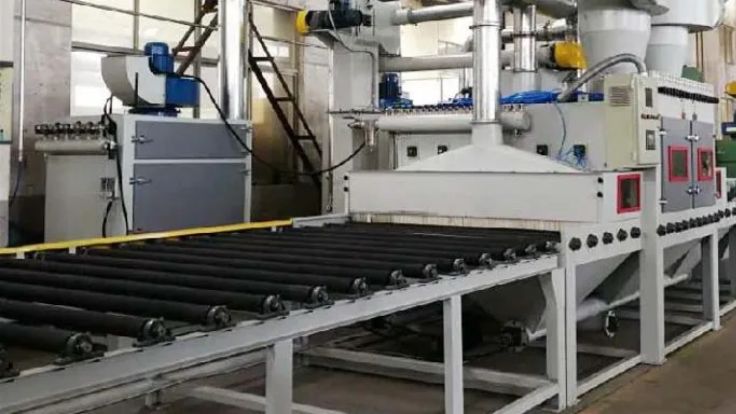



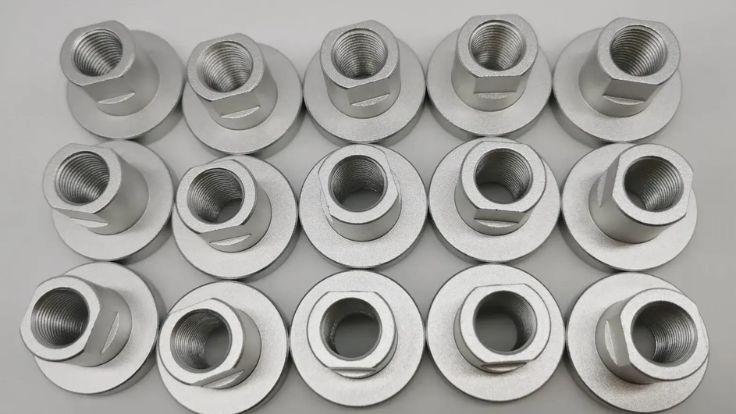

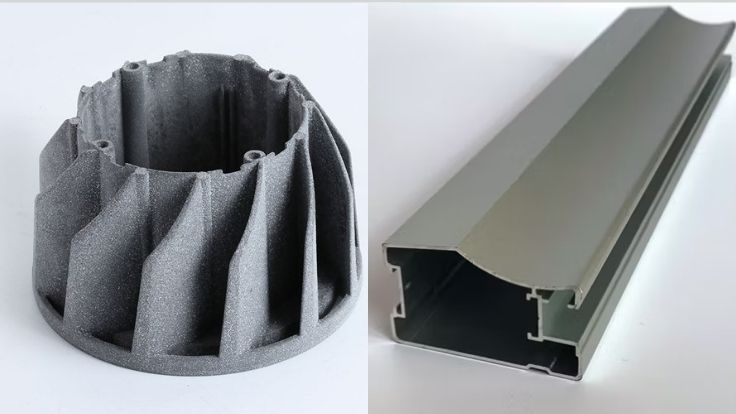

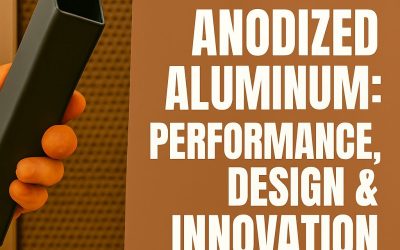

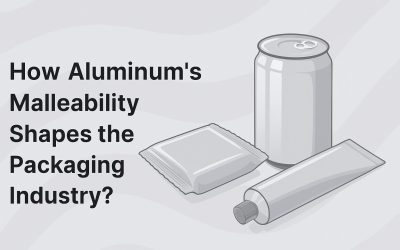
0개의 댓글